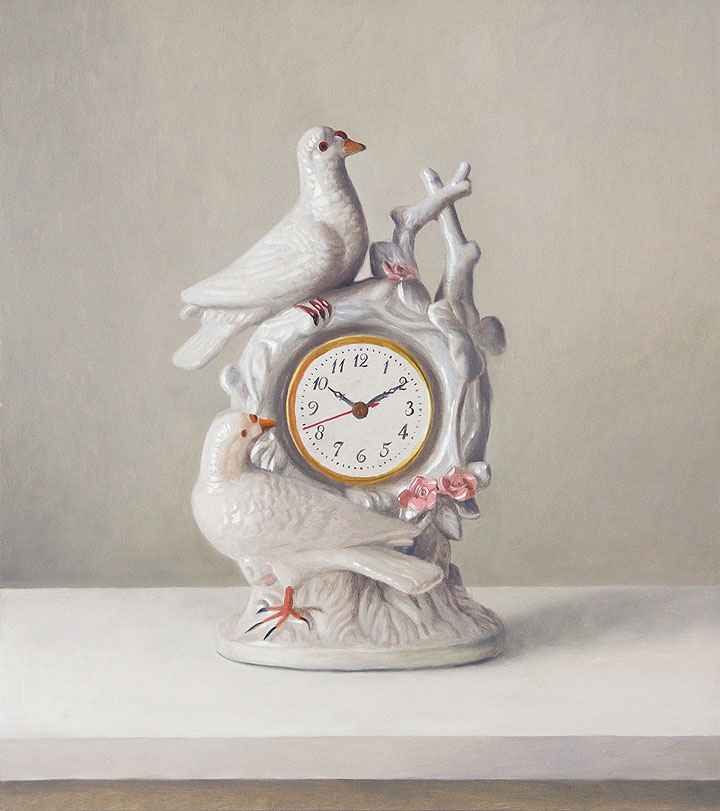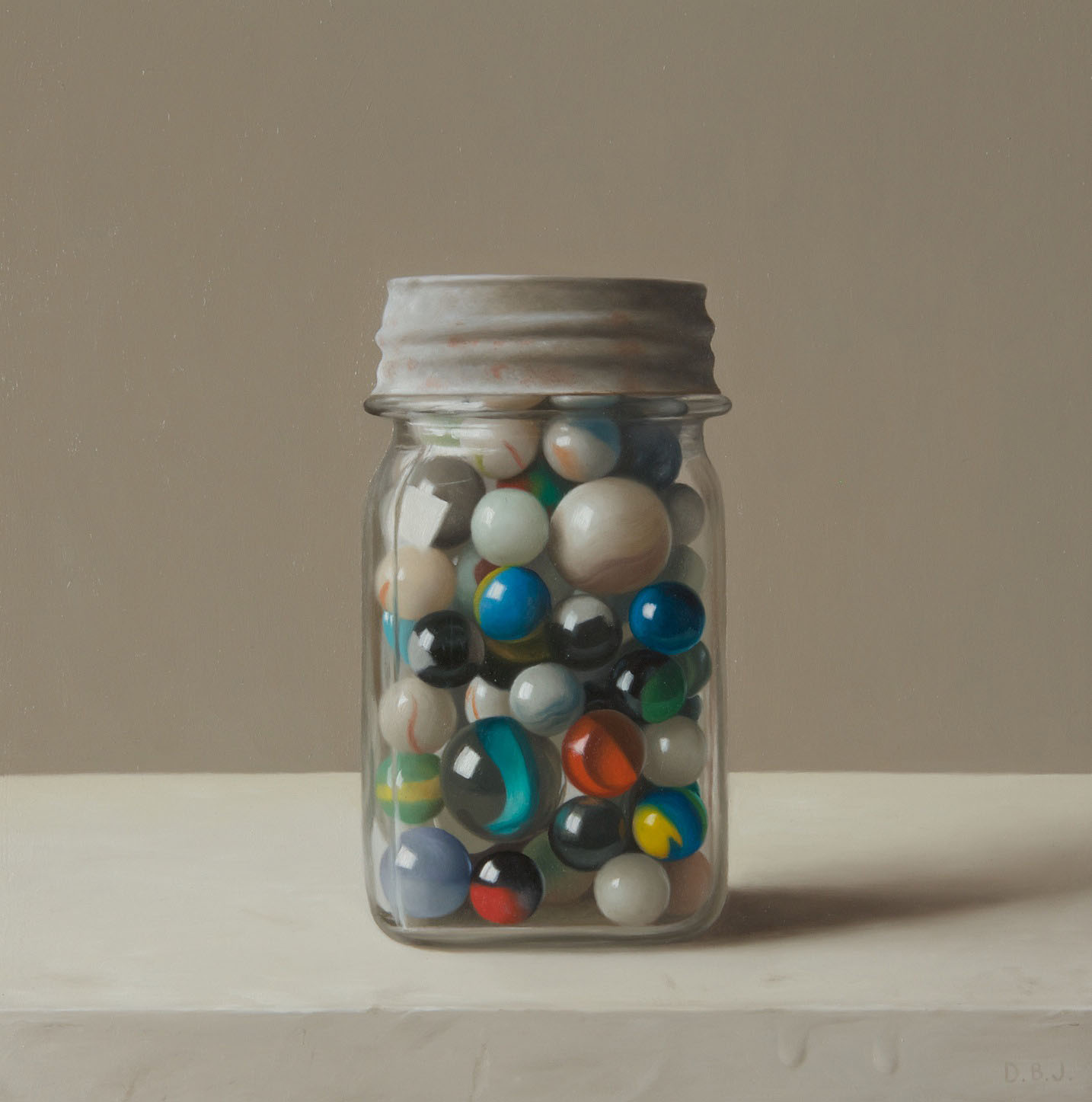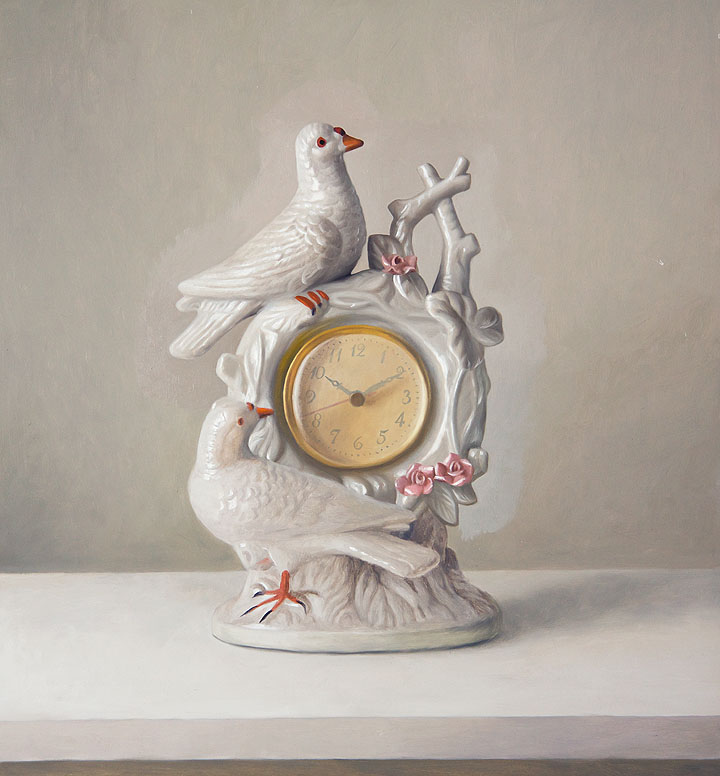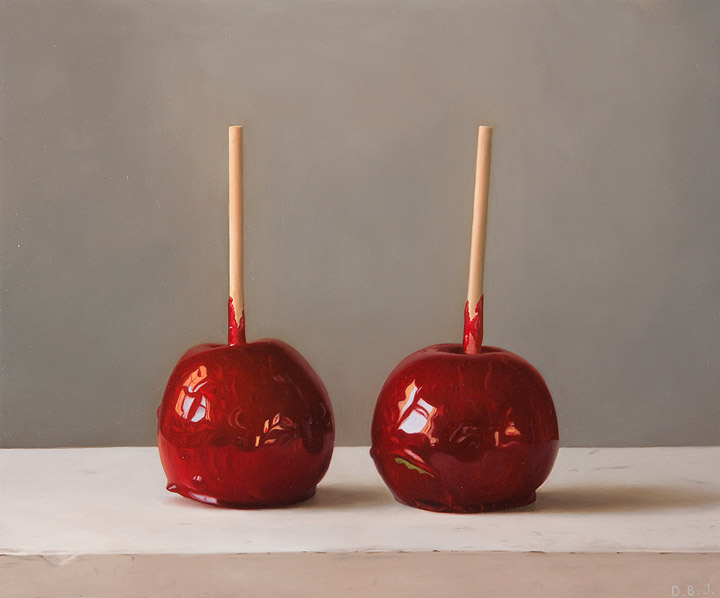Blog - On the Easel
A collection of updates, recent information and things that inspire me.
Work in progress
 As an insight into the process required to make a painting, I have decided to share some technical notes. My newest painting is of a campy white clock with birds and I have some images of the progress. The first image is of the first coat, I usually try and get as close to the finished painting as I can. I find that when I use a limited palette it doesn't really save time, so, if I am going to skimp at this point it will usually be in the drawing. You can see particularly in the feathers that I am kind of fudging things, I don't see the point in getting it perfect if it will be eliminated in the next coats.
As an insight into the process required to make a painting, I have decided to share some technical notes. My newest painting is of a campy white clock with birds and I have some images of the progress. The first image is of the first coat, I usually try and get as close to the finished painting as I can. I find that when I use a limited palette it doesn't really save time, so, if I am going to skimp at this point it will usually be in the drawing. You can see particularly in the feathers that I am kind of fudging things, I don't see the point in getting it perfect if it will be eliminated in the next coats.
The clock is handled a bit differently, I spent too much time getting the numbers right to just paint over my work so I paint the numbers very darkly so that they will show through my next coat, I don't really like doing it this way but it saves time, and with some finesse can look pretty good. Typically I like to work wet into wet, which means I rarely leave a brittle dry line (with some exceptions). So when I ultimately finish the numbers, I will work into some oil that I glaze over the clock face, and if that is too ugly I might paint the numbers lightly and then return again to paint them darker so that they have a slight blur. I go through all of this trouble because I want the numbers to feel like part of the clock and not decals on the face of the painting.
Second coat and you can see that the top bird is looking better and a little more refined. At this point I have painted the top bird and the clock down to the second bird, so you can see two levels of completion. The halo around the top bird and clock is where I am painting wet into wet, the lines just look better if my brush is bumping into a wet area, so I will put down a bit of the surrounding color before starting on the bird, you could apply a bit of oil to do this, but I like the viscosity of paint better, I like the paint to be a little stiff. Often I am using Kevrin brushes that can push a little more paint than synthetics, they are almost a cross between sables and hogs hair.
I have now done a thin coat on the clock face and before this coat is finished I will paint the numbers black again and complete the second bird and background, almost everything is here in the second coat but the third coat is when things really come together for me.
Here the clock has a third coat, the clock itself is very close to finished but the background needs an additional coat. The drawing and color is now sorted out, and tonally I am starting to see the porcelain in the way I was hoping to when I picked this subject. I have painted the clock face another time and I will need to go back and work on the numbers again before I am done. Each coat has taken about two days, I should be finished painting sometime next week.
This is still coat 3 and finally the painting has some subtle reflections, at least more subtle than I was able to create in earlier stages of the painting. When I go back into the background I will creep it up very close to the edge of the clock so as not to ruin my nice edge quality, but if I go over a bit it wont be too big of a deal, the point is to have some variation.
Next, I will finish the background and work on small details. Photos to follow......
Candy Apples
Kubby.....Finally
 Kubby, 10"x8" oil on aluminum panel. I finally finished Kubby, I did a in progress shot a while back but it takes some time for the painting to be ready to photograph. The painting has to be completely dry in order to do a light retouch varnish which is necessary to bring out the color and contrast. A painting never really looks better than while you are painting it, over the next few weeks the colors sink in and dull as they dry and become matte, so a varnish of some kind is important because the painting pops back to life. So here is the painting looking bright and new.
Kubby, 10"x8" oil on aluminum panel. I finally finished Kubby, I did a in progress shot a while back but it takes some time for the painting to be ready to photograph. The painting has to be completely dry in order to do a light retouch varnish which is necessary to bring out the color and contrast. A painting never really looks better than while you are painting it, over the next few weeks the colors sink in and dull as they dry and become matte, so a varnish of some kind is important because the painting pops back to life. So here is the painting looking bright and new.







